Space City Concept
Stephen Hawking and many others have suggested that the ultimate domain of humans is space.
Living in space will require industrial infrastructure that meets human needs for prosperity.
Materials, energy, and radiation protection are fundamental. This Web page describes a space
living facility (habitat or city) that could meet those needs.
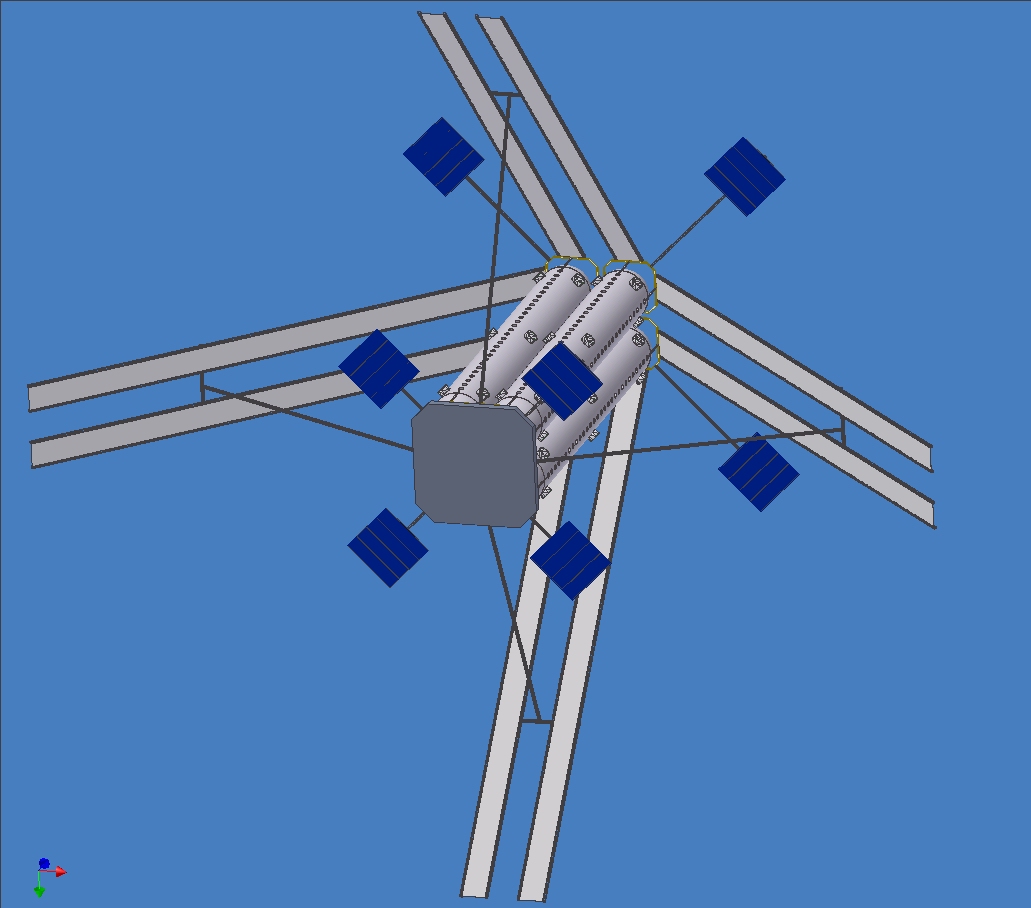
View of the space city from the solar radiation shield end. The radiation shield protects
residents from solar protons and other ionizing radiation. The shield is made of asteroid
rubble cemented together and is 50 meters square and four meters thick.
The space city orbits the sun in the asteroid belt where raw materials are plentiful. The
city is gravity gradient stabilized and always points the radiation shield toward the sun.
There is no spin or rotation of the city, so the residents spend their lives in zero gravity.
Consequently, space vehicles can approach and dock to the city from just about any direction.
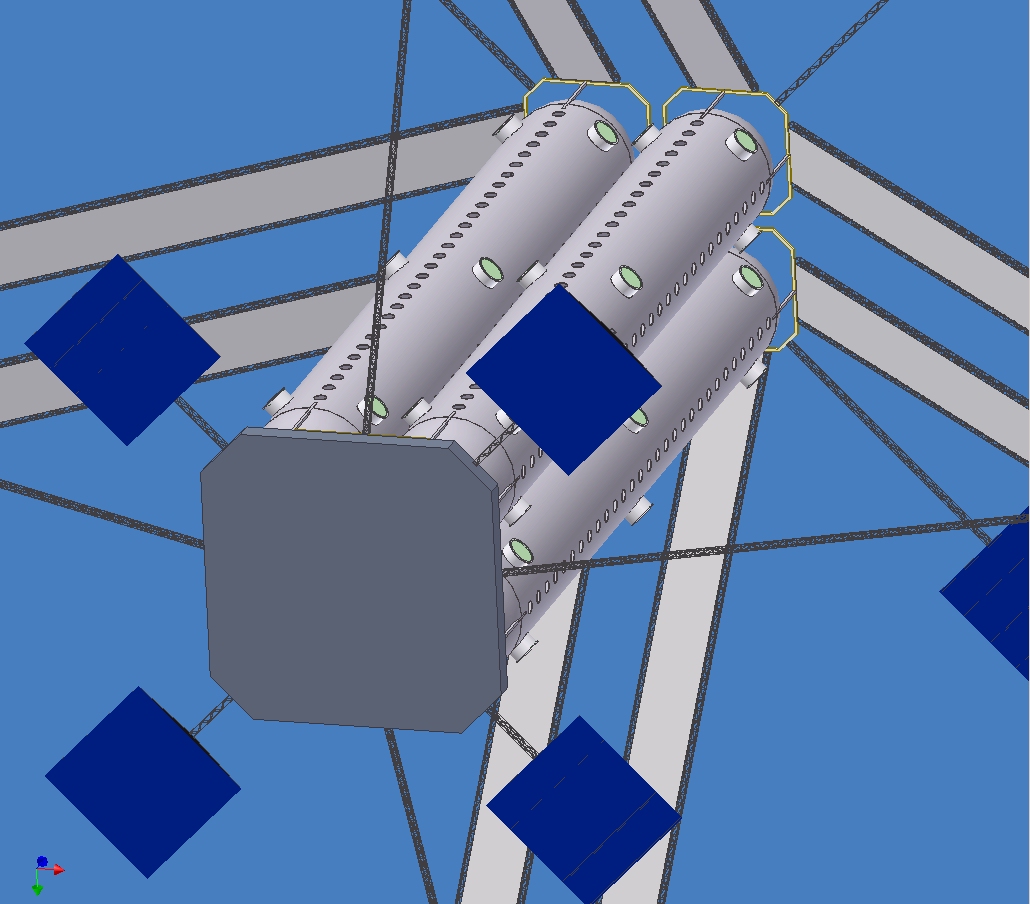
A closer view of the city from the sun end.
Energy is gathered from the sun in two ways. The eight long structures attached at the end
away from the sun are mirrors that reflect sunlight into the rows of windows on the four
residential pressure vessels. The light is used for illumination and agriculture and also
provides heat.
There are eight photovoltaic solar arrays, four mounted on the radiation shield, and four
mounted on the end structure that is away from the sun. These solar arrays provide electric
power for the city.
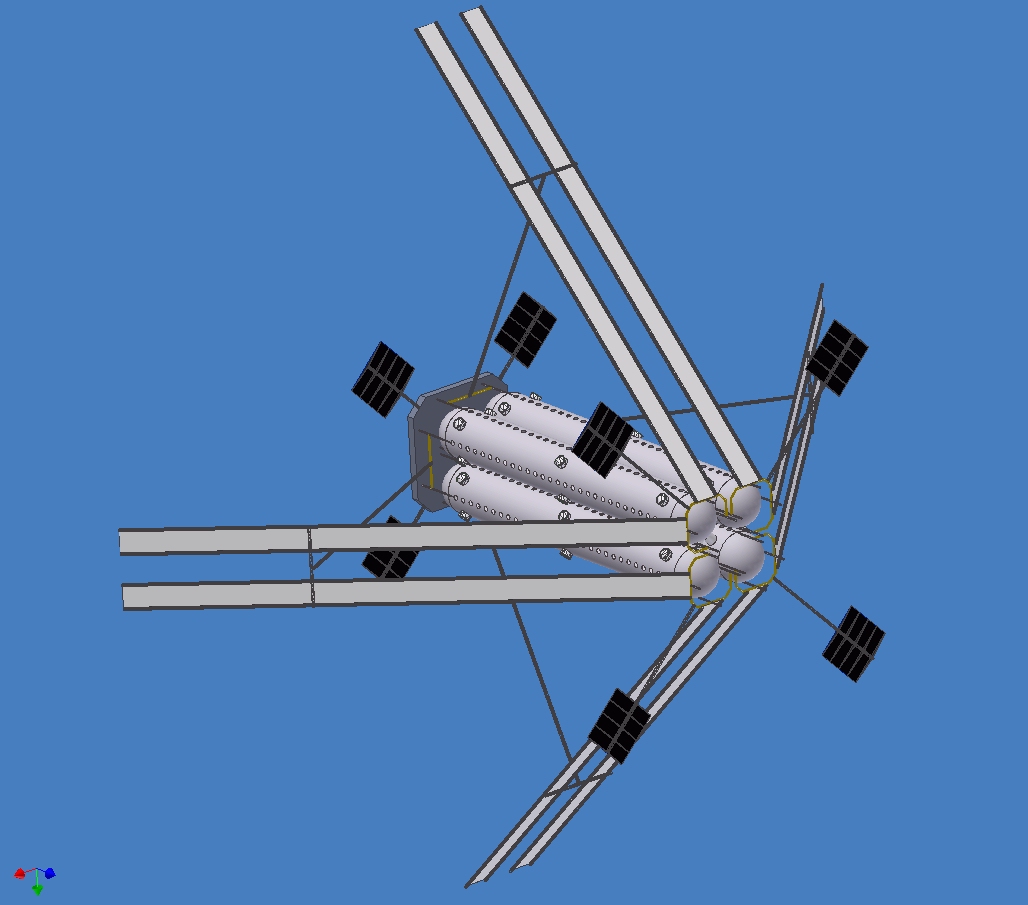
A view of the city from the end away from the sun.
Each residential pressure vessel is made from aluminum obtained from rocky asteroids. Each
vessel is 23 meters (75 feet) in diameter and 175 meters (575 feet) long, with a wall
thickness of 1/4 meter (10 inches). The walls of the residential pressure vessels provide
protection from cosmic rays, which unlike solar radiation, can come from any direction.
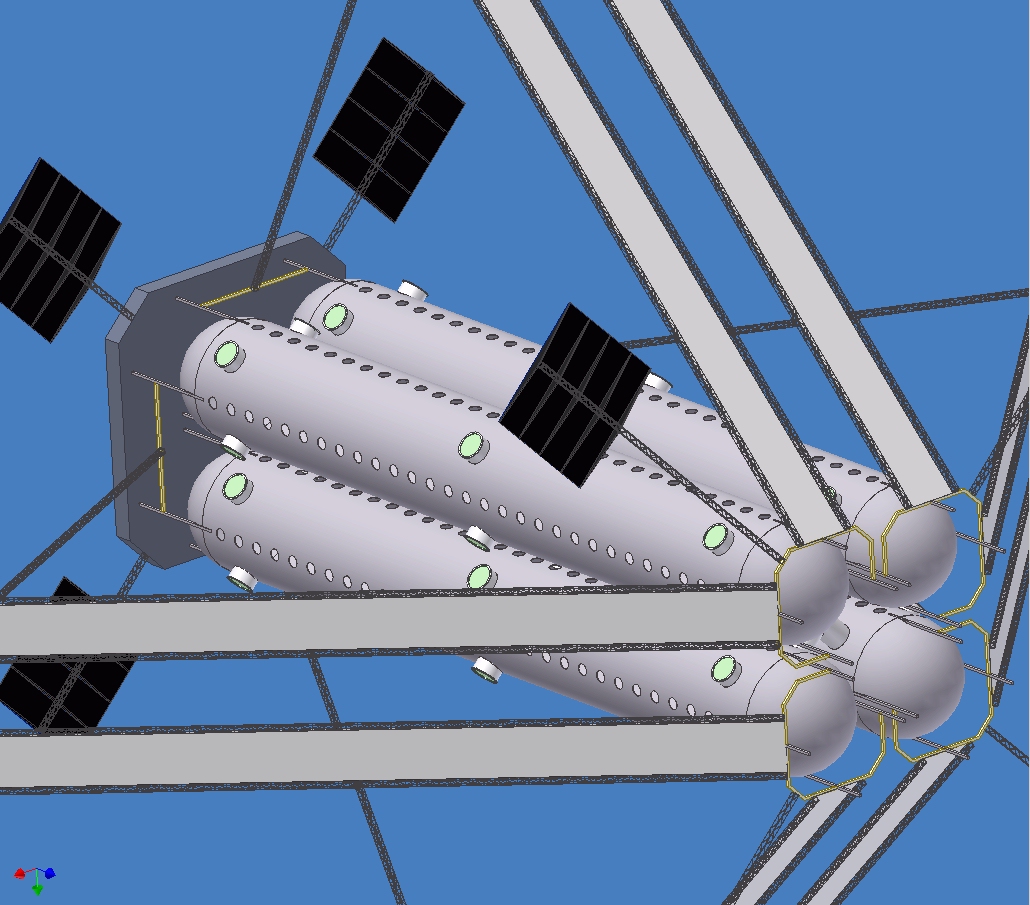
A closer view of the city from the end away from the sun.
People will evolve in space to become adapted to zero gravity and increased exposure to
radiation. For example, when going outside the residential pressure vessels, a resident
will be exposed to solar radiation or cosmic rays while space-walking (working in a space
suit) or commuting in lightweight space vehicles.
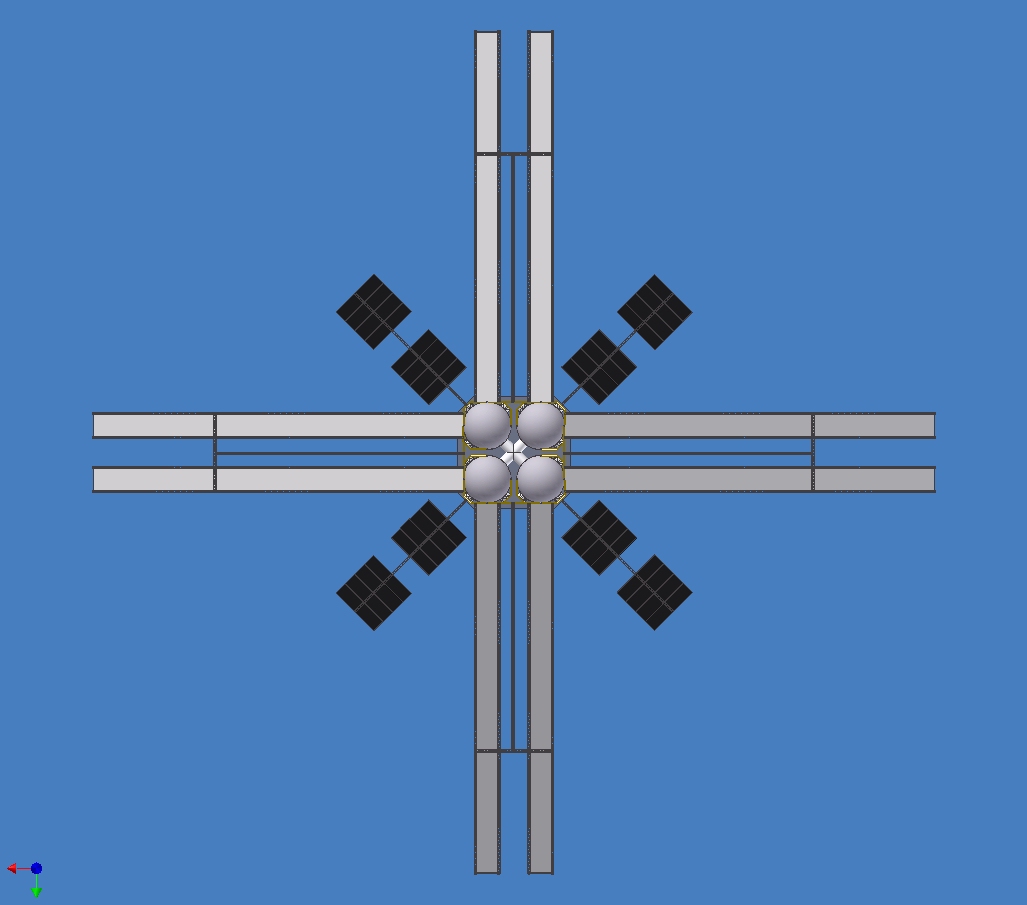
End view of the space city (looking toward the sun).
Obtaining material resources from asteroids makes sense because there is no gravity
well traversal required which would take significant energy and reaction mass. In many
cases, asteroids will drift slowly by the city and can be captured by robotic
spacecraft. In other cases, asteroids will be further away and will need to be
captured and propelled to the city for processing.
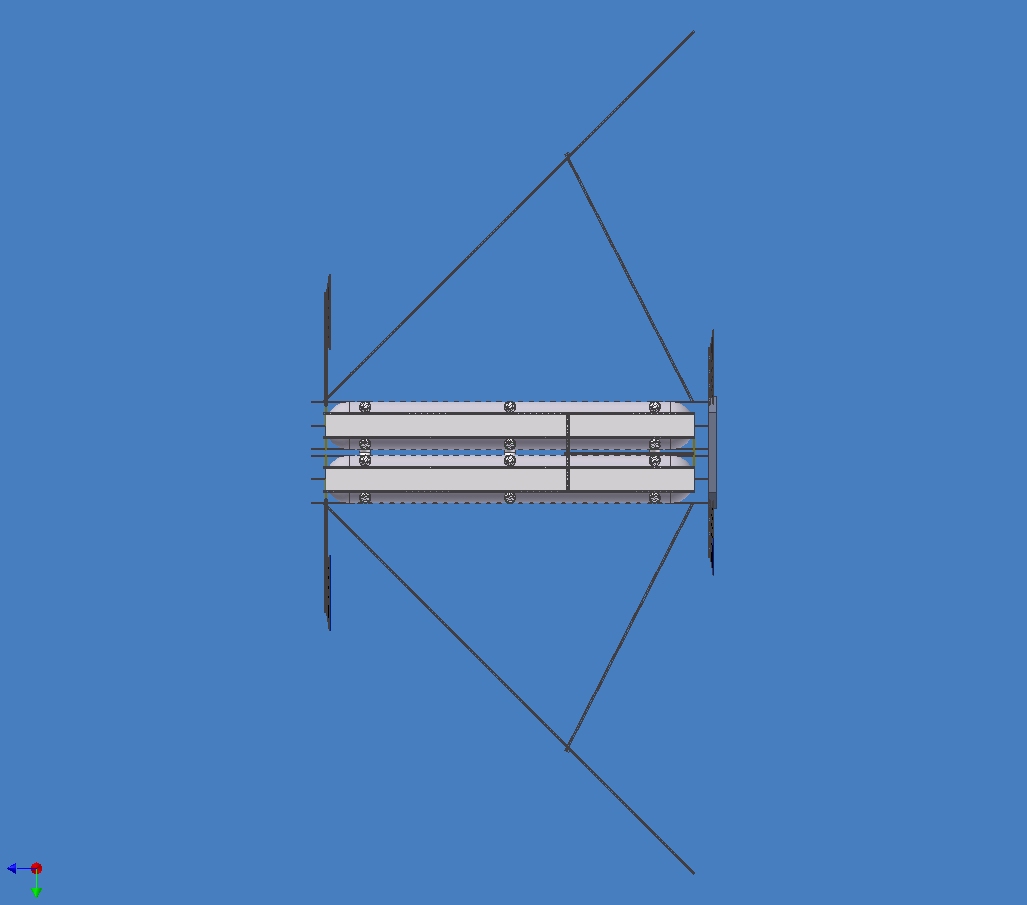
Side view of the space city. The solar mirrors are set at a 45 degree angle to the sun.
Some asteroid ore processing operations can be performed inside the pressurized space,
and some can be performed outside. For example, large concentrating mirrors can be used
outside the city for melting of large asteroids for molding into radiation shielding and
other purposes.
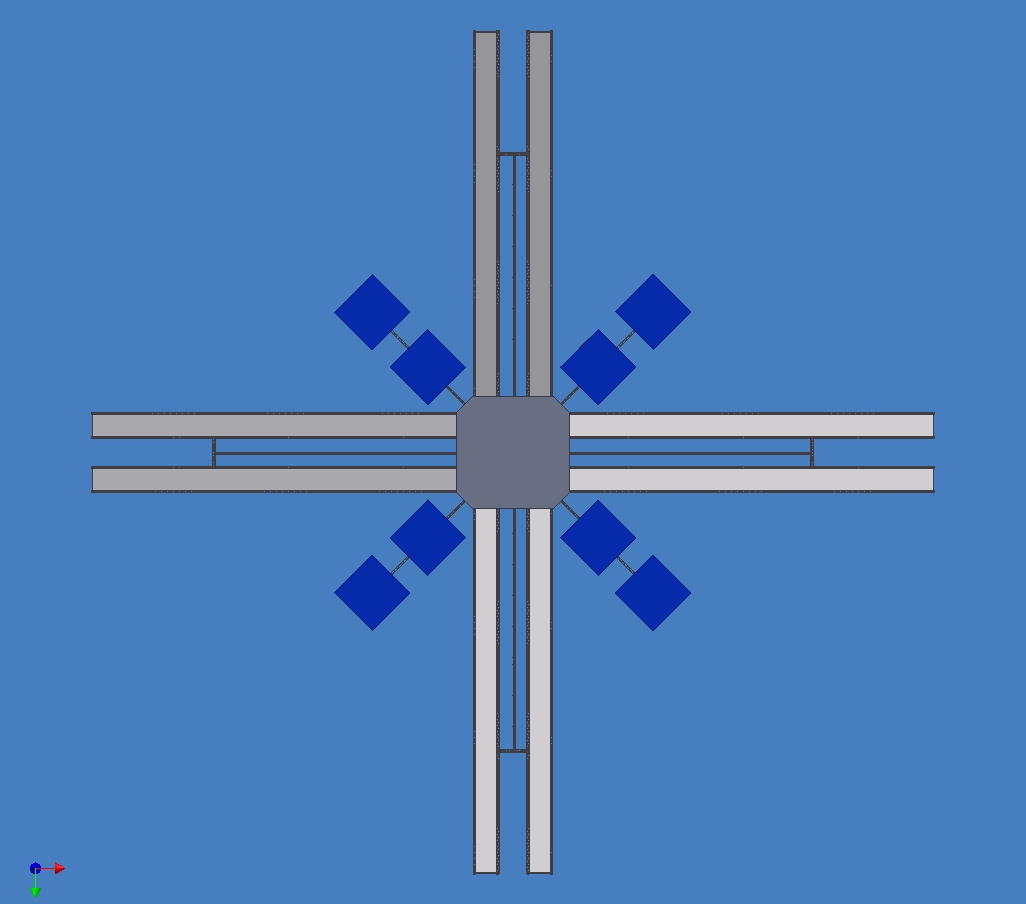
End view of the space city (looking away from the sun).
Space cities will not need to be entirely self-sufficient. Trade among cities in similar
orbits will be the easiest energetically, but trade with societies in gravity wells (Earth,
the Moon, and Mars) will also be feasible for high value to mass ratio commodities.
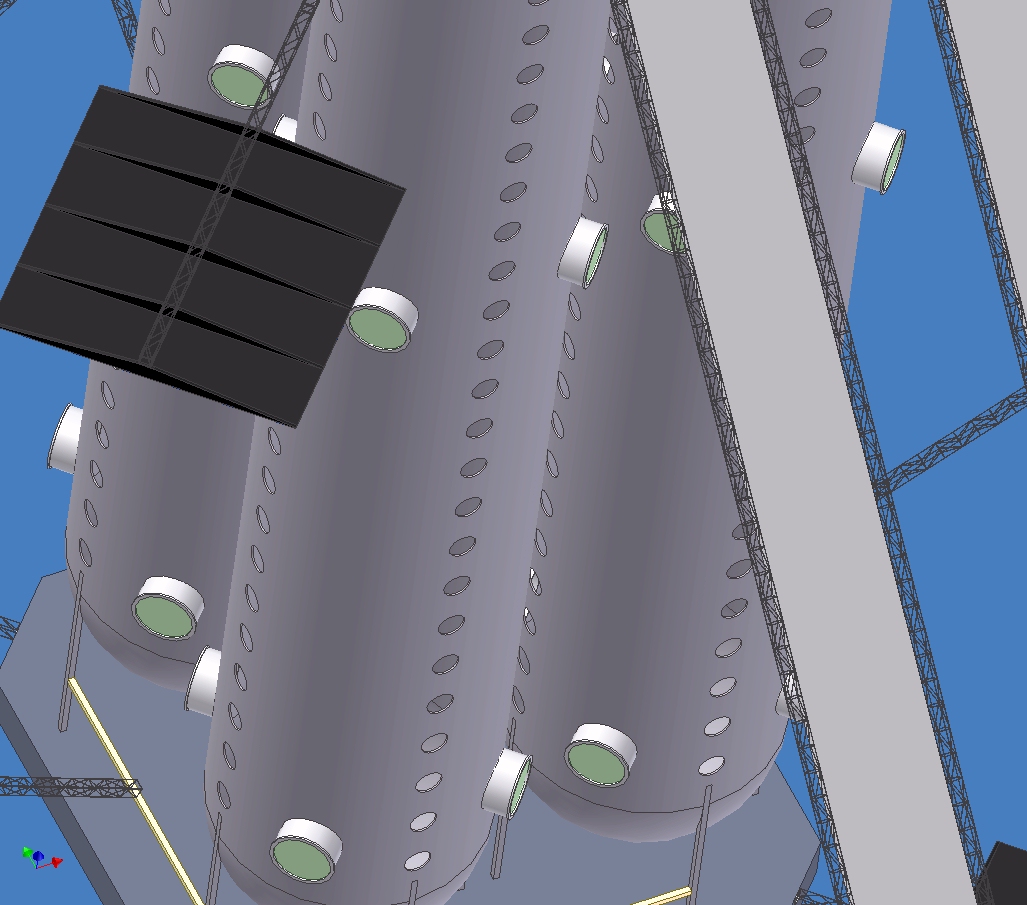
Close up view of the space city.
Some cities may use artificial gravity from being spun, but the structural costs of doing
so may make it somewhat rare. It is conceivable that some centrifuge hotels may be constructed,
but it is likely that many space residents of the future will spend their entire lives
without experiencing walking in a gravitional field.
 Email Richard dot J dot Wagner at gmail dot com
Email Richard dot J dot Wagner at gmail dot com
SpaceCity.html, this hand crafted HTML file was created March 7, 2007 .
Last updated July 5, 2011, by
Rick Wagner. Copyright © 2007-2011, all rights reserved.








 Email Richard dot J dot Wagner at gmail dot com
Email Richard dot J dot Wagner at gmail dot com